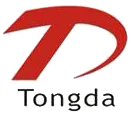
- Home
- >
News
The TD-5000 X-ray single crystal diffractometer is mainly used to determine the three-dimensional spatial structure and electron cloud density of crystalline substances such as inorganic, organic, and metal complexes, and to analyze the structure of special materials such as twinning, non commensurate crystals, quasicrystals, etc. Determine the accurate three-dimensional space (including bond length, bond angle, configuration, conformation, and even bonding electron density) of new compound (crystalline) molecules and the actual arrangement of molecules in the lattice; It can provide information on the crystal cell parameters, space group, crystal molecular structure, intermolecular hydrogen bonding and weak interactions, as well as structural information such as molecular configuration and conformation. X-ray single crystal diffractometer is widely used in analytical research in chemical crystallography, molecular biology, pharmacology, mineralogy, and materials science. Single crystal XRD is a high-tech product under the National Major Scientific Instrument and Equipment Development Project of the Ministry of Science and Technology, led by Dandong Tongda Technology Co., Ltd., filling the gap in the development and production of single crystal x-ray diffractometer in China.
The TDF series X-ray crystal analyzer delivers exceptional performance in microstructure analysis, supporting single crystal orientation, defect detection, and stress measurement. Featuring a vertical tube design with multi-window operation and imported PLC control, it ensures high precision, safety compliance (radiation <0.1 µSv/h), and adaptability across industries. Backed by ISO certification and global exports, this instrument empowers scientific and industrial advancements worldwide
TD-5000 X-ray diffractometer breaks international monopoly in high-end scientific instruments. This Chinese innovation delivers exceptional precision (0.0001° accuracy) and advanced detection capabilities, serving researchers in pharmaceuticals, materials science, and chemistry through comprehensive structural analysis.
The TD-5000 X-ray Single-Crystal Diffractometer is a high-performance instrument developed by Dandong Tongda Technology. Approved under China's National Key Scientific Instrument and Equipment Development Project, it fills a critical domestic gap in this field. Its primary function is determining the three-dimensional spatial structure and electron density distribution of crystalline substances—including inorganic compounds, organic compounds, and metal complexes—while also analyzing structures of special materials like twinned crystals, incommensurately modulated structures, and quasicrystals. It precisely measures the accurate 3D spatial structure of new crystalline compounds (including bond lengths, bond angles, configuration, conformation, and bonding electron density) and the actual arrangement of molecules within the crystal lattice. The system provides comprehensive structural information such as unit cell parameters, space group, molecular structure, intermolecular hydrogen bonding and weak interactions, and molecular configuration/conformation. It is widely used for analytical research in chemical crystallography, molecular biology, pharmacology, mineralogy, and materials science. Core Technology: A Dual Revolution in Precision and Intelligence (1) The "Mechanical Eye" with Atomic-Level Positioning Four-Circle Concentric Diffractometer: Overcomes traditional mechanical offset limitations, maintaining a constant rotational center to ensure diffraction spot coordinate errors remain below the nanometer level. PILATUS Detector: Combines single-photon counting technology with 172μm ultra-fine pixels. Achieves frame rates up to 20Hz, with noise suppression capability 3 times greater than conventional CCD detectors. (2) Fully Intelligent Closed-Loop Workflow PLC One-Touch Control: Automates the entire process from crystal positioning to data acquisition, reducing manual operation time by 90%. Cryogenic Enhancement System: Features ±0.3 K precision temperature control (100K–300K), boosting signal intensity for weakly diffracting crystals by 50% with liquid nitrogen consumption of only 1.1–2 L/h. (3) Dual Assurance: Safety and Expandability Lead Door Interlock + Leakage Protection (≤0.12 µSv/h), exceeding national safety standards. Optional Multilayer Focusing Optics (Mo/Cu Dual Target), enabling full-scale analysis from small-molecule pharmaceuticals to minerals with large unit cells. The advent of the TD-5000 X-ray Single-Crystal Diffractometer signifies more than an instrumental breakthrough—it marks the era where China's high-end scientific research equipment officially achieves autonomous precision definition. As of 2025, this system has served over 30 leading institutions across fields including chemistry, materials science, and aerospace. As crystals unveil the secrets of life under the probing gaze of domestically developed instruments, China's scientific "eye that discerns the essence of matter" now shines with brilliant clarity.
Product Spotlight: Dandong Tongda's X-Ray Crystal Analysis Solutions Dandong Tongda Science and Technology introduces its advanced X-ray crystal analysis equipment, delivering precision and reliability for industrial applications. The TDF Series X-Ray Crystal Analyzer combines powerful analytical capabilities with industrial-grade reliability. Featuring four operational windows and PLC control technology, it serves high-end manufacturing sectors including semiconductor wafer inspection, aerospace component stress evaluation, and laser crystal processing. Our X-Ray Crystal Orientators (TYX-200/TYX-2H8) enable rapid, precise measurement of crystal cutting angles with accuracy up to ±30 arcseconds. Capable of handling samples up to 30kg, these instruments support directional cutting of piezoelectric, optical, laser, and semiconductor crystals. Both product lines utilize non-destructive X-ray diffraction technology, replacing traditional radioactive methods while improving processing efficiency and accuracy for crystal material research and manufacturing.
The TD-5000 X-ray Single Crystal Diffractometer by Dandong Tongda Science & Technology Co., Ltd. delivers exceptional precision (0.0001°), efficiency, and safety. Featuring a four-circle kappa goniometer and PILATUS detector, it enables accurate 3D crystal structure analysis for materials science, pharmaceuticals, and geology, showcasing China's high-end instrument innovation.
Dandong Tongda's TDF Series X-ray Crystal Analyzer represents China's breakthrough in high-end, self-developed analytical instruments. It delivers precise, safe, and reliable crystal structure analysis for global materials science and pharmaceutical R&D.
Dandong Tongda's X-ray crystal orienters (±30 arcsec accuracy, 30kg load capacity) deliver precise orientation for piezoelectric, optical, laser, and semiconductor crystals. With specialized models and sample stages, these systems support global crystal research and manufacturing, earning international recognition for Chinese precision instruments.
Dandong Tongda, a leading Chinese manufacturer, produces advanced X-ray crystal orienters. Utilizing X-ray diffraction, these instruments enable precise cutting angle measurement and directional cutting of various crystals. Key models like TYX-200 and TYX-2H8 offer high accuracy (±30″), large sample capacity, user-friendly operation, and efficient detection. Widely used in semiconductor, optics, and research fields, these world-class instruments are certified, patented, and exported globally.
The TDF series X-ray crystal analyzer is a large-scale analytical instrument used to study the internal microstructure of substances. It is mainly used for single crystal orientation, defect inspection, determination of lattice parameters, determination of residual stresses, study of the structure of plates and rods, study of the structure of unknown substances, and single crystal dislocations.
The TD-5000 X-ray single crystal diffractometer is mainly used to determine the three-dimensional spatial structure and electron cloud density of crystalline substances such as inorganic, organic, and metal complexes, and to analyze the structure of special materials such as twinning, non commensurate crystals, quasicrystals, etc. Determine the accurate three-dimensional space (including bond length, bond angle, configuration, conformation, and even bonding electron density) of new compound (crystalline) molecules and the actual arrangement of molecules in the lattice; It can provide information on the crystal cell parameters, space group, crystal molecular structure, intermolecular hydrogen bonding and weak interactions, as well as structural information such as molecular configuration and conformation. It is widely used in analytical research in chemical crystallography, molecular biology, pharmacology, mineralogy, and materials science.
Fiber accessories are tested for their unique crystal structure using X-ray diffraction (transmission) method. Test the orientation of the sample based on the fiber crystallinity and half peak width of the fibers. This type of accessory is usually installed on a wide-angle diffractometer and is mainly used to study the texture of thin films on the substrate, perform crystal phase detection, orientation, stress testing, and other tests.












